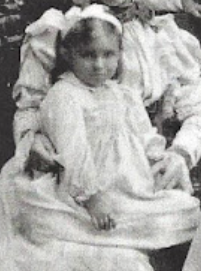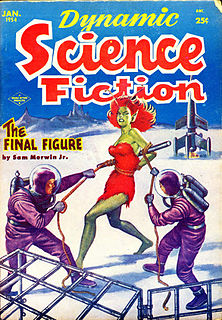Sources
- http://www.thrillingdetective.com/hunter2.html
- On Ice (Superior Reprint, 1945)
Robert George Dean (died 1989) was an American author of detective fiction. He also worked as a journalist, and as an ambulance driver during World War II.
Robert George Dean | |
|---|---|
| Died | 1989 |
| Occupation | Author |
| Nationality | United States |
| Period | 1938–1954 |
| Genre | Detective fiction |
The last few books Dean wrote, under the pseudonym George Griswold, are spy novels that still have a certain fan following. A character known as Mr. Groode, a shadowy British spymaster, figures in all four novels, but his prominence in the plot varies widely from book to book.
Tony Hunter series
other
He also wrote four books under the pseudonym George Griswold:

Cecil Louis Troughton Smith, known by his pen name Cecil Scott "C. S." Forester, was an English novelist known for writing tales of naval warfare, such as the 12-book Horatio Hornblower series depicting a Royal Navy officer during the Napoleonic wars. The Hornblower novels A Ship of the Line and Flying Colours were jointly awarded the James Tait Black Memorial Prize for fiction in 1938. His other works include The African Queen and The Good Shepherd.
Ellery Queen is a pseudonym created in 1929 by American crime fiction writers Frederic Dannay and Manfred Bennington Lee and the name of their main fictional character, a mystery writer in New York City who helps his police inspector father solve baffling murders. Dannay and Lee wrote most of the more than thirty novels and several short story collections in which Ellery Queen appeared as a character, and their books were among the most popular of American mysteries published between 1929 and 1971. In addition to the fiction featuring their eponymous brilliant amateur detective, the two men acted as editors: as Ellery Queen they edited more than thirty anthologies of crime fiction and true crime, and Dannay founded and for many decades edited Ellery Queen's Mystery Magazine, which has been published continuously from 1941 to the present. From 1961, Dannay and Lee also commissioned other authors to write crime thrillers using the Ellery Queen nom de plume, but not featuring Ellery Queen as a character; several juvenile novels were credited to Ellery Queen, Jr. Finally, the prolific duo wrote four mysteries under the pseudonym Barnaby Ross.
John Dickson Carr was an American author of detective stories, who also published using the pseudonyms Carter Dickson, Carr Dickson, and Roger Fairbairn.
William Riley Burnett was an American novelist and screenwriter. He is best known for the crime novel Little Caesar, the film adaptation of which is considered the first of the classic American gangster movies.

Edith Caroline Rivett was a British crime writer, who wrote under the pseudonyms E. C. R. Lorac, Carol Carnac and Mary Le Bourne during the golden age of detective fiction.

Harry Stephen Keeler was a prolific but little-known American fiction writer, who developed a cult following for his eccentric mysteries. He also wrote science fiction.
Herbert Adams (1874–1958) was an English writer of fifty 'cosy' mystery novels, 28 featuring the detective Roger Bennion, a golfer and amateur sleuth whose cases are often set in or around golfing competitions; and 9 feature Jimmie Haswell, a London lawyer. He also wrote short stories, humorous verse and two other mystery novels under the pseudonym Jonathan Gray.

John Beach Litel was an American film and television actor.

Samuel Kimball Merwin Jr. was an American mystery fiction writer, editor and science fiction author. His pseudonyms included Elizabeth Deare Bennett, Matt Lee, Jacques Jean Ferrat and Carter Sprague.
Patrick Quentin, Q. Patrick and Jonathan Stagge were pen names under which Hugh Callingham Wheeler, Richard Wilson Webb, Martha Mott Kelley and Mary Louise White Aswell wrote detective fiction. In some foreign countries their books have been published under the variant Quentin Patrick. Most of the stories were written by Webb and Wheeler in collaboration, or by Wheeler alone. Their most famous creation is the amateur sleuth Peter Duluth. In 1963, the story collection The Ordeal of Mrs. Snow was given a Special Edgar Award by the Mystery Writers of America.
Dora Amy Elles, who wrote as Patricia Wentworth, was a British crime fiction writer.
Edwy Searles Brooks was a British novelist who also wrote under the pen-names Berkeley Gray, Victor Gunn, Rex Madison, and Carlton Ross. Brooks was born in Hackney, London. He is believed to have written around 40 million words.

Gordon Holmes Landsborough, (1913–1983), English publisher, author and bookseller, was in the forefront of change in the paperback publishing and bookselling industries in England during the 1950s to 1980s. Considered a "maverick publishing genius", he was noted for his phenomenal drive and energy, his innovative business ideas and also for his prolific output as an author.

Charles Victor was a British actor who appeared in many film and television roles between 1931 and 1965. He was born Charles Victor Harvey.

Ronald George Hinings Adams, known professionally as Ronald Adam, was a British officer of the RFC and RAF, an actor on stage and screen, and a successful theatre manager.
The bibliography of American writer Fredric Brown includes short stories, general fiction, mysteries and science fiction stories.
Alice Nina Hoysradt, née Conarain was an Irish writer of over 70 romance novels as her maiden name Nina Conarain and under the pseudonym of Elizabeth Hoy from 1933 to 1980.
Ernest Carpenter Elmore was an English theatre producer and director, and writer of crime and fantasy novels. He wrote his crime novels under the pseudonym John Bude.
Zenith Jones Brown was an American crime fiction writer who also wrote for a time in England. She wrote under the pseudonyms David Frome, Leslie Ford, and Brenda Conrad. She is perhaps best known for her novels featuring the fictional Grace Latham and John Primrose, though some of her earlier standalone work has been praised.